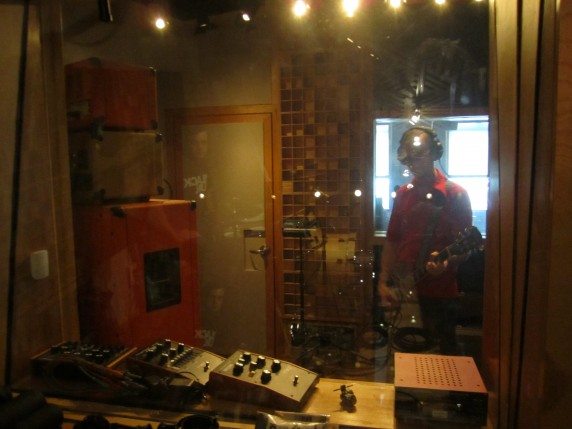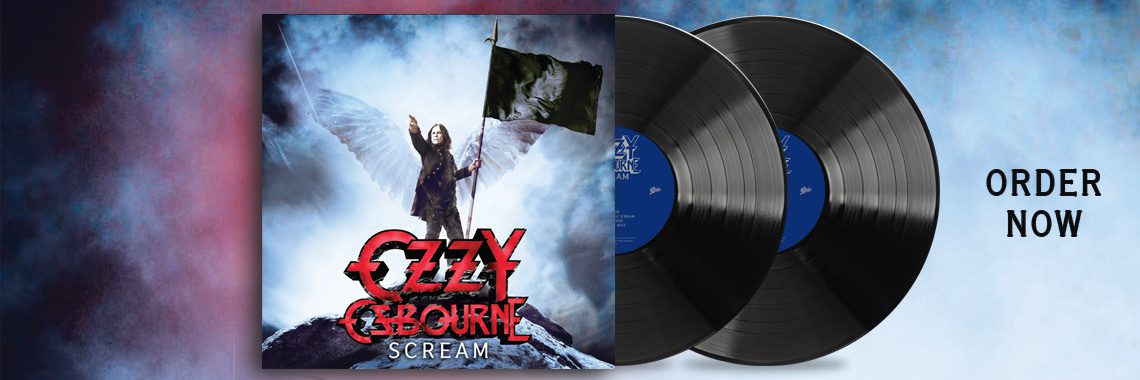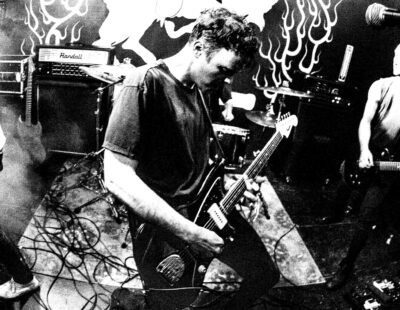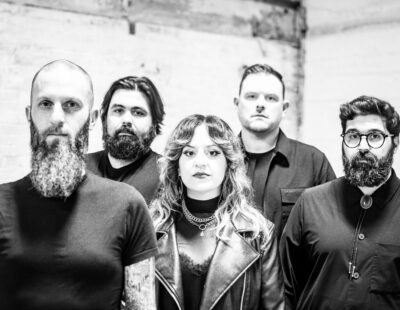
By Greg Peterson
You’re probably wondering which records I bought on the morning that Batillus began recording our second full-length album… some Purcell, some Machault, Schiff playing Schubert impromptus, Debussy/Ravel string quartets, some Hindemith, some Schoenberg, some Strauss, Souzay singing Faure and Schubert, and some late Shostakovich quartets.
You see, Willi and I have been listening to a lot of classical music lately, and since the studio (Sound Generation) is located just a short walk away from Academy Records (the city’s best place to find quality classical vinyl, and coincidentally the spot where Willi and I both worked and the idea of Batillus was born) we like to hang out there while the drums and drum mics get set up. Because, even though it’s one of the most important parts of any recording session, no one wants to listen to that business.
But still, even after leaving plenty of time for the set-up and the getting of drum sounds, we arrived to find Geoff and Fade heading to Guitar Center next door to replace some small piece of drum trash—I mean hardware—that had broken. Damn—no sounds had been got. The studio is small, and the control room is really the only place to hang out and relax. A long book is a good thing to have when you have to listen to each drum being hit for about ten minutes.

The live room is not very big either, so the room mics were fairly close to the kit. I wasn’t too concerned, though, because I knew that our engineer Sanford Parker has ways of making anything sound huge and spacious. One of the mics for he kick drum was a speaker cone, wired in reverse, and mounted inside a little drum frame. To pick up extra low end information, Sanford said.
After the drums were making sounds to our satisfaction and Geoff got tired of playing his “whole kit” beat, it was my turn. There was a smaller iso-room between the control room and the live room, and that’s where I set up my sound, the same way I do for shows: Orange head going through the bottom Orange cab, switching between two different channels, one clean with a bit of grit if I dig in, and one high gain/heavy low end; Electric head going through the top cab with a more gnarly trebly high gain sound. Sanford asked if I was using less gain than when we recorded Furnace with him two years ago. He was right; I had dialed back each amp’s gain by about one click. Sharp ears and a good memory on Mr. Parker.
For the bass, we tracked a direct signal which we would re-amp the next day, fine-tuning the tone song by song to find just the right thing. Willi’s Sunn Coliseums continue to prove their worthiness in the studio as well as on the road.

We like to record the drums, bass, and guitar live, playing together in real time. Though on some songs we used a click track, which feels nothing like playing along with human beings, but makes it very easy to put together a composite take (which is when you play the chorus really well on take 1 and the bridge really well on take two and fuse them together like Frankenstein’s monster, but without the murderous sensitivity). Generally we had a take that we were happy with after two or three tries. As Sanford would say, “It wasn’t just good, it was good Enough.”
We finished all the basic tracks on Day 2, and then I did some guitar doubling and overdubs. I like to carry around ideas for overdubs in my head in the weeks leading up to a recording session, without actually trying them out at home first. This doesn’t always work, as Willi, Geoff, Fade, and Sanford will tell you. I could usually tell if something was worth doing simply by the looks on their faces through the window as I was playing.
This is a good way to bring up two important lessons in recording. 1) Be Prepared. We had been playing most of the songs twice a week for almost a year, and if we hadn’t been doing that, I don’t think we would have been able to finish all the basic tracks in three days. And 2) Don’t Get Attached. If an overdub idea, or even a part you’ve been playing forever is not working, change it. Or get rid of it all together. You can hear things so much more clearly in the studio, and sometimes adjustments need to be made.

And after three long days of listening to Batillus in loud studio monitors and louder headphones, there’s nothing like coming home and putting on an LP of violin fantasies by Henry Purcell. Try it some time.
** Visit and like Batillus on Facebook. Click HERE.






